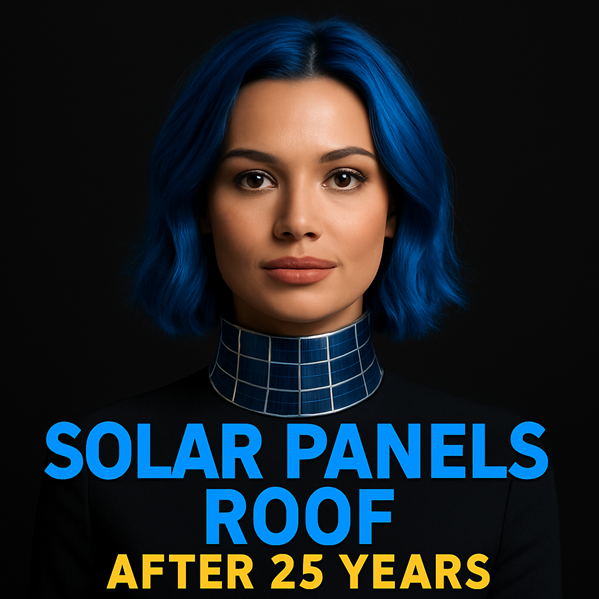As Canadian homeowners increasingly consider solar energy, questions surrounding long-term performance and property impact have become paramount. Addressing these concerns, SolarEnergies.ca has released a comprehensive new guide, “The Truth About Your Roof & Solar Panels After 25 Years in Canada,” authored by company owner Vitaliy Lano. The publication confronts common fears about panel degradation and roof damage head-on, providing data-driven answers and expert insights drawn from over a decade of industry experience. The analysis aims to demystify the 25-year commitment, shifting the conversation from apprehension to informed confidence.

The guide directly tackles the core hesitation for many potential solar adopters: the true longevity of their investment. Lano has observed a recurring pattern of concern among property owners regarding the durability of panels in Canada’s demanding climate and the physical impact of their installation. “Homeowners are right to question what their property will look like in two and a half decades. This isn’t just a purchase; it’s an integration with their home, the most significant asset most people own,” Lano stated. He added that the purpose of the new publication is to provide clear, practical guidance that cuts through marketing noise and industry jargon. “My mission has always been to arm homeowners with honest data so they can see solar not as a leap of faith, but as a calculated, secure investment in their home’s future,” he expressed.
A central theme of the article is the predictable and minimal nature of solar panel degradation. The guide clarifies that while all panels lose a fraction of their efficiency over time, modern technology has made this process incredibly slow. The industry standard for annual degradation is between 0.5% and 1%, but high-quality monocrystalline panels, the type most common in new residential installations, perform even better, degrading at just 0.3% to 0.5% per year. The article translates this into tangible long-term value, showing that a panel degrading at 0.5% annually will still operate at approximately 87.5% of its original capacity after 25 years. This performance is often guaranteed by manufacturer warranties.
“The word ‘degradation’ sounds final, but the reality is much more optimistic. We're talking about a system that remains a powerful energy producer for decades,” Lano commented. “The data confirms that after 25 years of service, a quality solar panel isn’t nearing the end of its life; it’s simply a seasoned veteran that still delivers substantial power. This is the kind of reliability that makes the financial case for solar so compelling.” The guide further breaks this down, comparing monocrystalline panels, which can retain up to 92.5% of their output, with polycrystalline panels, which are estimated to operate at 75% to 85% capacity over the same period.
The publication also confronts the widespread belief that Canada’s harsh winters are a significant detriment to solar production. Lano’s analysis points to a surprising fact: solar panels operate more efficiently in colder temperatures due to improved conductivity. The primary challenge is not the cold, but the physical obstruction from heavy snow. Citing a study from the Northern Alberta Institute of Technology (NAIT), the article quantifies this impact, noting that annual energy loss from snow cover in Canada is around 4-6%—a figure far lower than most homeowners assume. Lano suggested a broader perspective is needed when evaluating performance. “An owner in Edmonton was concerned about a production dip in December, which is perfectly normal,” Lano explained. “When we reviewed his annual data, the exceptional output from the long, cool, sunny days in spring and summer had already more than compensated for the short, snowy winter days. It’s the yearly total that matters, not a few specific weeks.”
Perhaps the most critical issue addressed in the guide is the fear of roof damage, specifically leaks. Lano makes a firm distinction between the technology itself and the quality of its installation. “Let me be unequivocal: Solar panels do not cause roof leaks, but substandard installations certainly can,” Lano declared. He detailed how professional installers use advanced mounting and flashing systems, such as the K-Flash, which are engineered to create a layered, watertight barrier. These components slide under existing shingles to direct water flow naturally over the sealed penetration points, maintaining the roof's integrity. “When getting a quote, a homeowner should ask the installer to walk them through their specific flashing system. If they can’t explain precisely how they guarantee a leak-proof seal for the next 25 years, that should be a major red flag,” Lano advised.
Going a step further, the article introduces a concept Lano calls the "roof-shield effect," where solar panels can protect the shingles underneath them. By blocking direct UV radiation and creating a cooling air gap, panels can mitigate the two primary causes of asphalt shingle aging. This can extend the life of the portion of the roof they cover. “It is a remarkable and often unexpected benefit,” Lano said. “Instead of being a liability, a properly installed solar array can actively preserve the part of the roof it covers from the very elements that cause wear and tear.”
The cornerstone of a safe and durable installation, according to the guide, is a mandatory pre-installation structural assessment. This engineering review confirms that a roof can support the static weight of the panels and the dynamic load of accumulated snow, as dictated by local building codes. It is a critical step that ensures the safety and longevity of both the solar system and the home itself. “The single most important moment for any solar system is the day it’s installed, and that process begins with a structural check,” Lano asserted. “Skipping this assessment isn't just cutting a corner; it's a fundamental failure of due diligence that puts the entire project at risk. A reputable installer will always insist on it.” The analysis concludes by looking at the entire lifecycle of the investment, including the eventual need for a new roof, and explains the process of a "solar R&R" (removal and reinstallation).
The article from SolarEnergies.ca frames the 25-year solar journey as one defined not by risk, but by the quality of the initial partnership. “The technology is proven, the performance is reliable, and the financial returns are clear,” Lano concluded. “The health of a roof and the output of the panels over the long term are directly tied to the expertise and diligence of the installer chosen on day one. A homeowner’s focus should be on finding a partner who can prove they will protect the home for the long run.”
For more information, visit the company's website.
###
For more information about Solar Energies In Canada SEIC, contact the company here:
Solar Energies In Canada SEIC
Vitaliy Lano
2368680609
admin@solarenergies.ca






